As the US Navy prepared to battle its way across the Pacific in the years leading up to World War II, it realized that it would not have the benefit of extensive forward bases to support the fleet on the road to Tokyo. The Japanese controlled most of the islands in the Central Pacific, and the Washington Naval Treaty prohibited fortification of the few the US did own, so they would probably be lost early in the war. Refueling at sea could help this, but many services couldn't be performed while the ship was underway. Instead, the US would have to figure out how to quickly turn a coral atoll lacking even reliable fresh water and lying several thousand miles from the nearest major permanent base into a forward anchorage where the fleet could rearm, resupply, and launch itself again into the Japanese defenses.
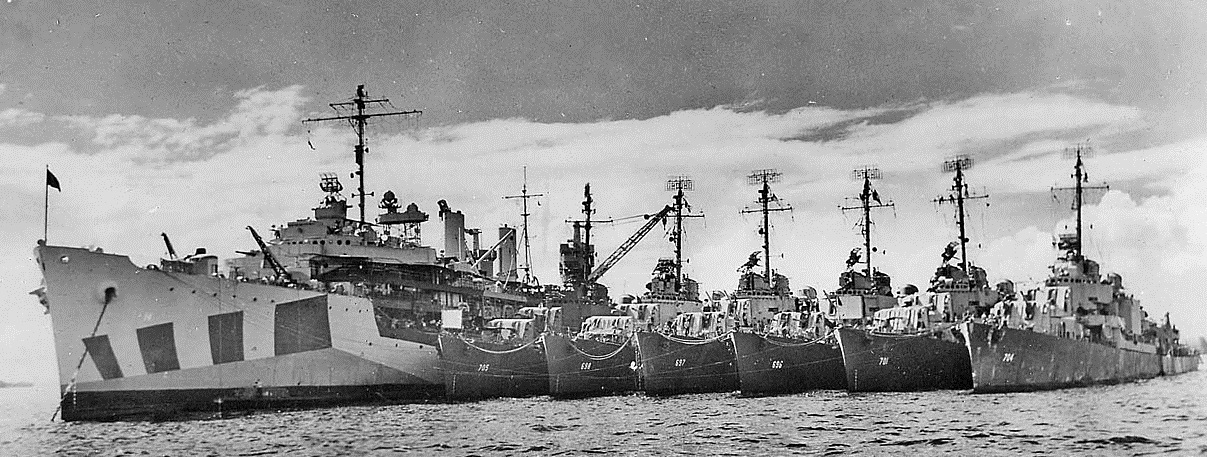
Destroyer Tender Dixie with her charges near Leyte
When the war began, most of the ships available for the advance bases were quite similar to those that had supported the fleet in World War I. Submarines and destroyers were supported by their type-specific tenders. While both types of ship had grown larger, more capable, and more self-sufficient in the interwar years, they still needed the support of tenders, with their extensive workshops, skilled technicians, and supplies of spare parts, ammunition, and food. Larger ships tied up alongside repair ships when they were unable to cope with problems using their internal resources. And hospital ships treated the sick and wounded, and evacuated them to the mainland.
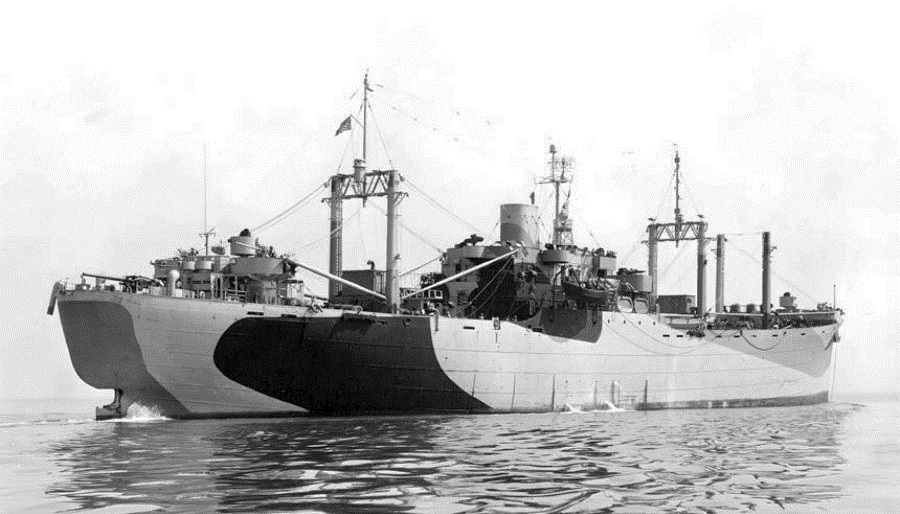
Ammunition ship Ranier
A few more types of ships had become prominent. One of them, the stores ship, differed from her civilian reefer counterpart in that her holds were designed so that she could discharge the same mix of fresh and frozen goods into the last ship to come alongside as she had into the first, without having to unpack and repack everything. Ammunition ships were designed with a similar constraint. While not every ship required the same type of ordnance, the ship had to be able to safely discharge anything it carried, from 20mm rounds to battleship shells and torpedoes, and do so without having to rearrange the holds.
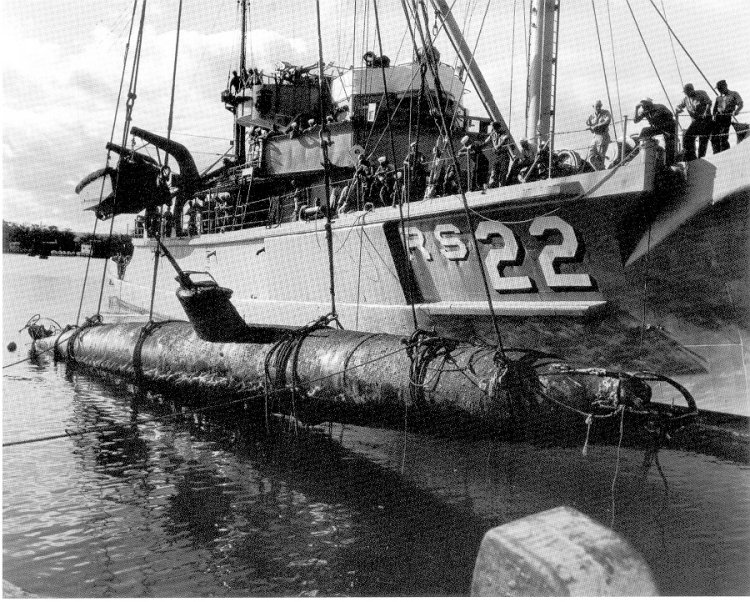
Salvage ship Current hauling up a Japanese minisubmarine
Tugs had long been a part of naval operations, and in fact the first steamships were used as tugs, to move sailing ships in and out of harbor against the wind and tide. During WWII, they provided valuable services worldwide. Besides the obvious jobs of handling ships in harbor, they towed disabled ships out of combat zones, moved barges across the ocean, and joined the salvage ships in trying to save damaged ships. This could mean anything from providing power, water, and crews for firefighting to pulling off ships that had run aground to carefully sealing up and dewatering vessels that had sunk in harbor.
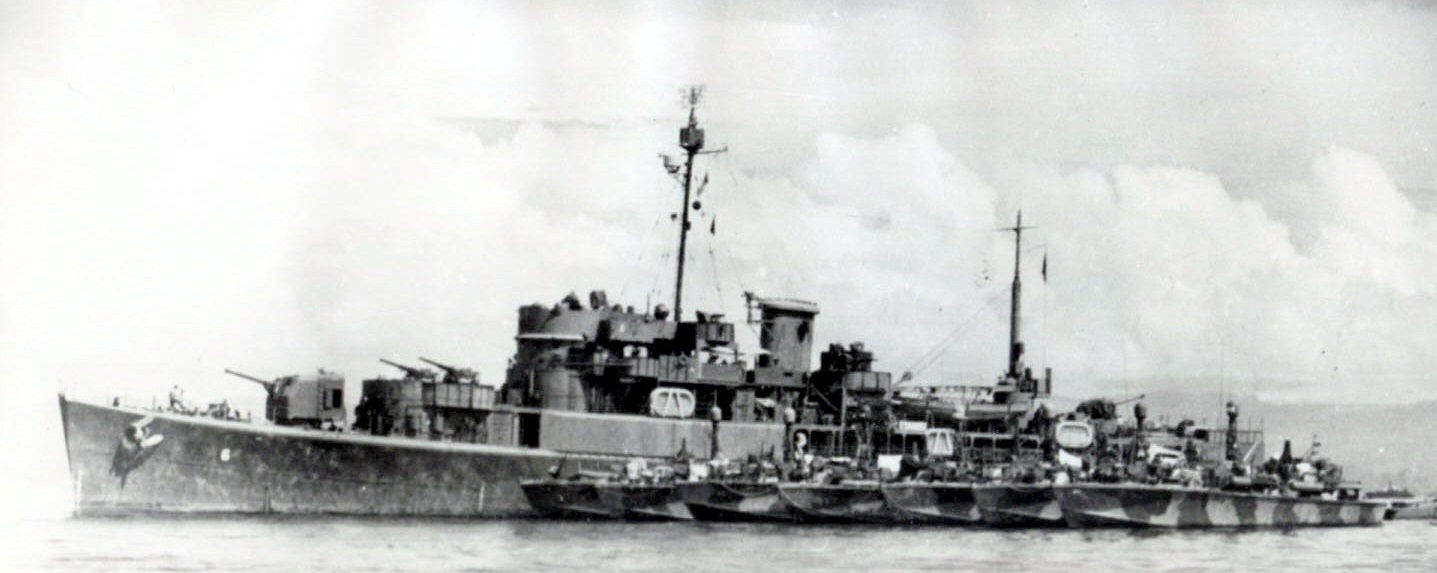
USS Oyster Bay with PT Boats
More types of tenders had also joined the fleet. The increasing number of motor torpedo boats, also known as PT boats in US service, required tenders. These tenders were much smaller than the traditional destroyer and submarine tenders, and were equipped to compensate for the deficiencies of the MTBs in living quarters, support facilities, and storage. The fleet's requirement for long-range scouting and patrol was filled by PBY Catalina flying boats, which also needed tenders of their own. These provided the same services an aircraft carrier did, fuel, ammunition, supplies, and maintenance, but without the hangar and flight decks. Maintenance crews often worked on their charges from small boats, or winched the flying boats up on the beach to repair their hulls.
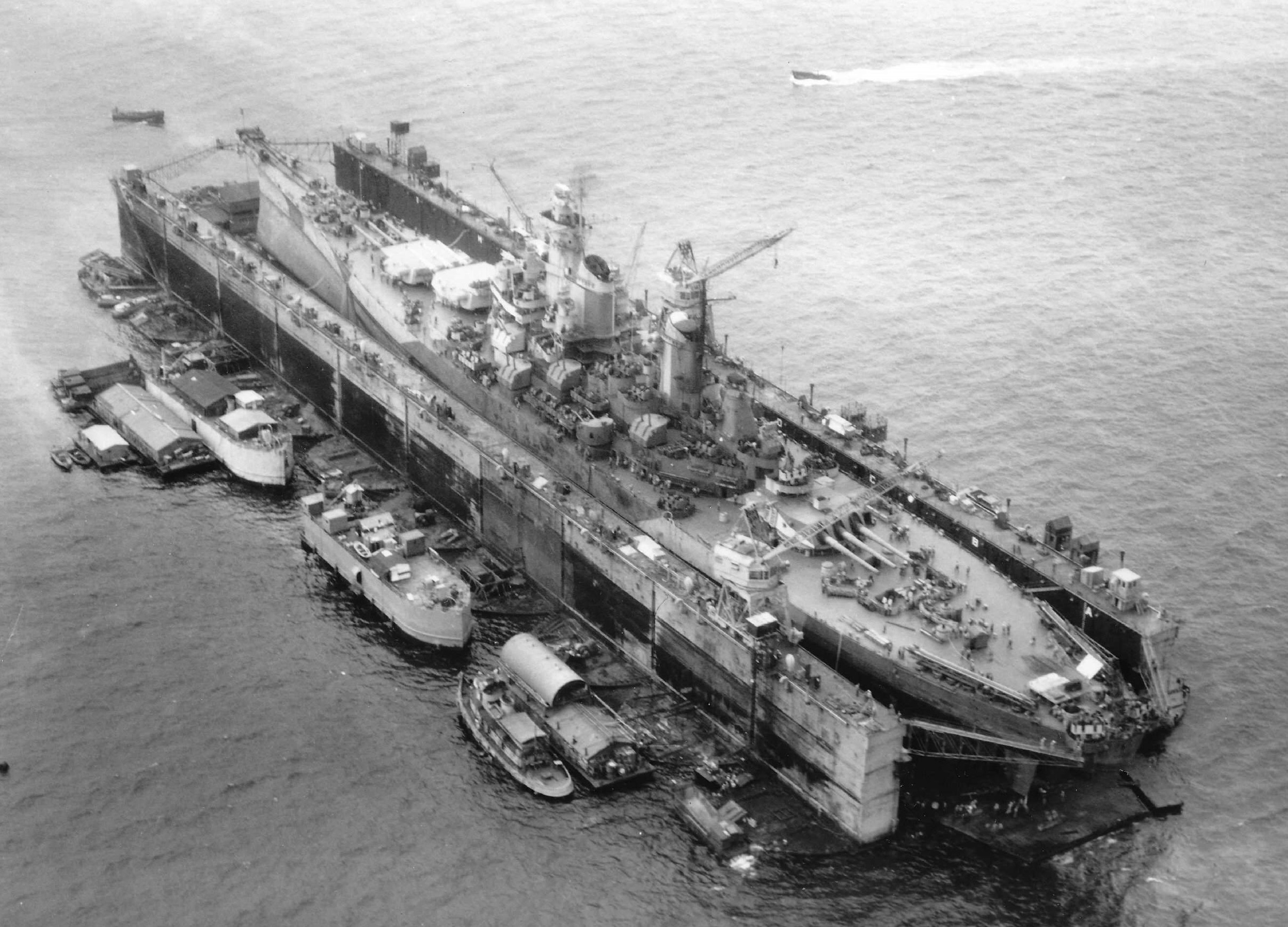
Floating drydock ABSD-2 lifts USS Iowa in Seeadler Harbor, Admiralty Islands
Ships also needed hull repairs in forward areas, but winching them up on the beach was usually impractical, and traditional drydocks took a long time to construct. Divers could sometimes be used, but serious damage needed the ship's hull to be accessible to those not in diving gear. The solution was the floating drydock. This was essentially a giant pontoon, which would be flooded down, ship to be docked floated over it, and then the chambers would be pumped dry, lifting the ship. While the idea was not new,1 during WWII, the US constructed floating drydocks of unprecedented size and in incredible numbers. The biggest, the ABSDs, were made of 10 prefabricated sections and provided the capability to lift even ships as big as Iowa at forward bases. Dozens of smaller floating drydocks were used to support destroyers and submarines across the Pacific, and even at permanent bases in the US, relieving the strain on the existing drydocks. The floating drydocks also provided useful cargo capacity when forward bases had to be relocated, carrying barges, small boats, and other equipment while under tow to another atoll.
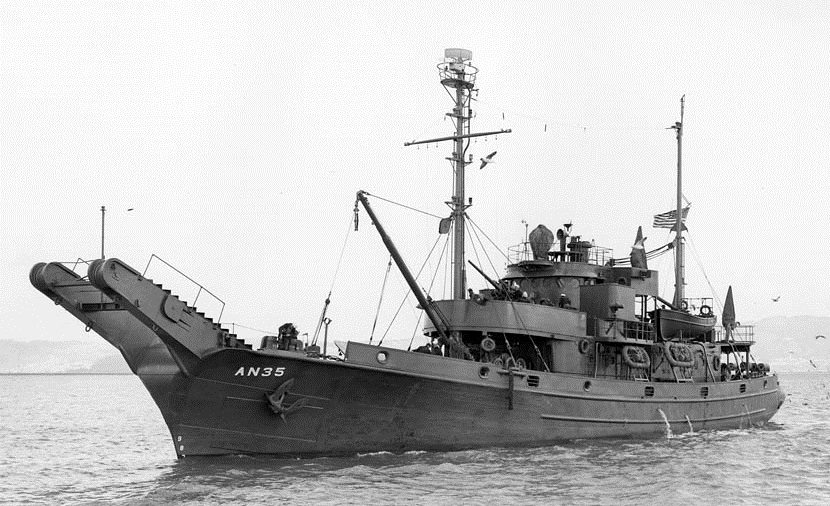
Net-layer Teak
As the US offensive moved into high gear, the needs of the fleet multiplied, and so did the types of ships supporting it. Stores ships were supplemented by general-issue stores ships, which carried dry goods, canned food, and supplies ranging from toilet paper to stationary. Net-laying ships were responsible for carrying and maintaining anti-submarine nets around important anchorages. Degaussing ships set up ranges in forward areas to remove ship's magnetic signatures. Surveying ships charted potential anchorages and even ventured close to enemy-held islands to update charts. Gasoline tankers were procured to supply fuel to forward bases. To house the men required to run a forward base, barracks ships were constructed.
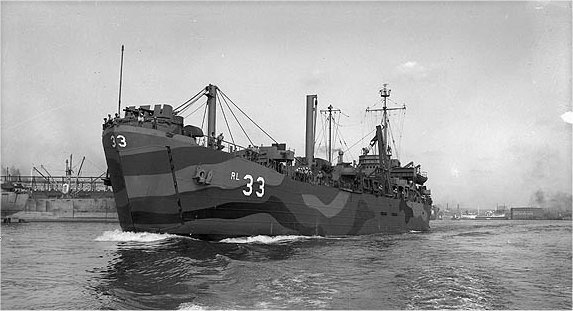
Landing-craft repair ship Chimaera, a converted LST
Many of the new ships required special support. The proliferation of small craft resulted in several new types of repair ships, dedicated to fixing the problems of these small vessels. Some were dedicated to fixing internal-combustion engines2 while others focused on hull damage, aircraft or landing craft. Many of these were modified LSTs, whose former tank decks were easily subdivided into workshops.
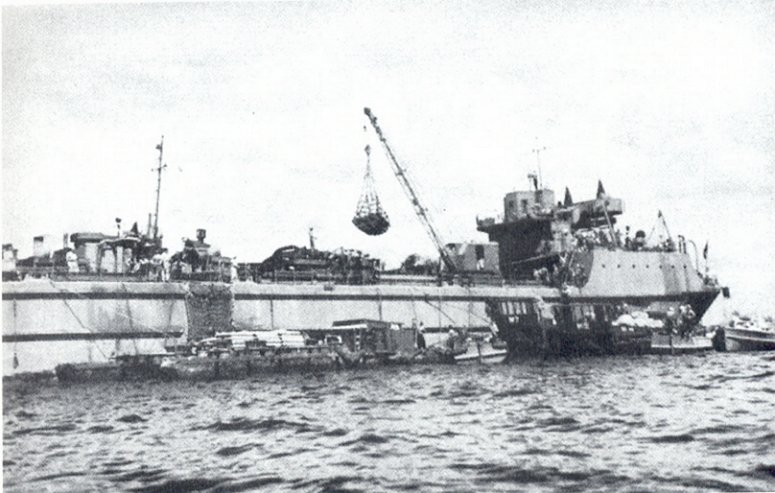
Concrete barge Trefoil
Even more exotic ships popped up to support the bases. Many craft did not have the capability to produce fresh water of their own, so a few tankers were converted into distilling ships, extra evaporators installed and their oil tanks refitted to hold fresh water. The bases also made extensive use of barges, such as the concrete Trefoils, which were fitted out to support the base. Their facilities ranged from fairly basic dry goods and refrigerated storage all the way to butcher's shops and bakeries, and they allowed the diet of the small-craft crews to approximate those of the sailors on their larger brethren.3
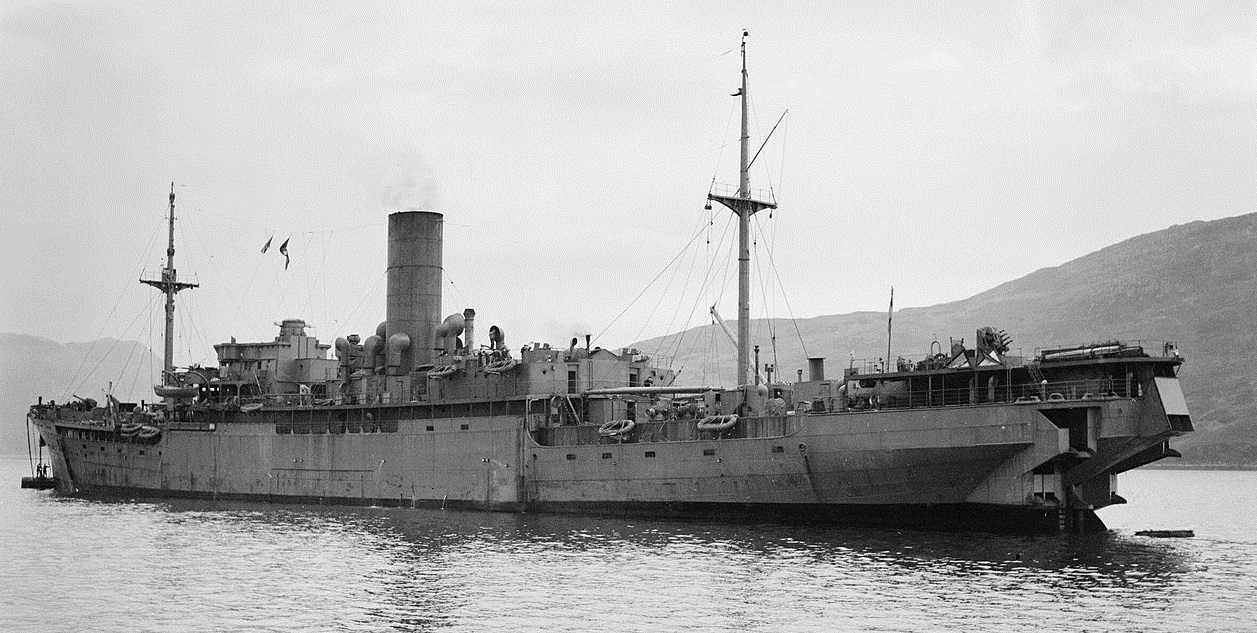
HMS Menestheus, one of the amenities ships4
Not all innovations in auxiliary ships were American, of course. As the British began to assemble their own Pacific fleet, they built many of the same kinds of ships, along with a new type of their own. The amenities ships were designed to provide R&R to sailors afloat. The amenities in question included a 350-seat theater, quiet rooms, a chapel and a canteen. To supply the bar with beer, a brewery was installed, capable of producing 250 barrels a week, thanks to the close collaboration of naval architects (who gained a healthy respect for beer) and brewers (who gained a healthy respect for watertight bulkheads). Some of the beer was sent to other ships, but much was delivered to the onboard bar, which was decorated by civilian interior designers.5
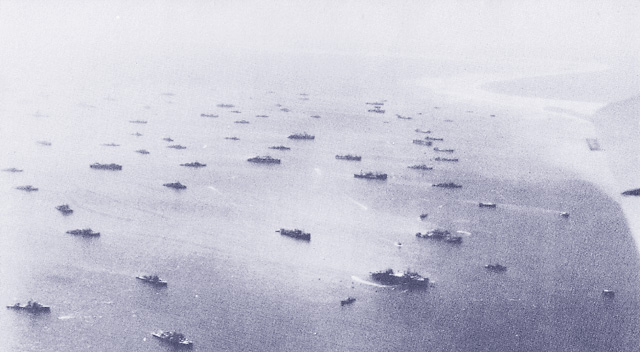
Auxiliary Ships in Eniwetok Lagoon, Marshall Islands
This is merely a high-level overview of the ships that made it possible for the largest fleets the world has ever seen to operate out of forward and remote bases. But this is only half the story of late-war fleet logistics. The USN also developed the ability to transfer more than fuel on the high seas, allowing ships to stay at sea for months on end. We'll look at this process next time.
1 The first large floating dock I'm aware of was built in 1869 for use in Bermuda, and towed across the Atlantic by Warrior. A slightly later example was the American Dewey, built in 1905 to serve the Philippines. Interestingly, the second ship she lifted was the first Iowa, BB-4. ⇑
2 Remember that most large naval vessels were propelled by steam at this point. ⇑
3 A similar craft is the amusingly-named Landing Barge, Kitchen, developed to feed the crews of landing craft during the invasion of Normandy. ⇑
4 At the time this photo was taken, Menestheus was actually being used as a minelayer, and the equipment at the stern is to support that role. She was later converted to an amenities ship. ⇑
5 The British also operated a similar amenities ship in WWI, RFA Gourko. Gourko was a floating theater/canteen, used to support the Grand Fleet at Scapa, another base not known for its shore facilities. Sadly, I believe there was no brewery onboard. ⇑

Comments
What did you do in the Great War, daddy?
I brewed beer, honey, tons and tons of beer.
I bet it was rubbish beer.
And I'll bet that it tasted like the nectar of the gods to the men who got it.
@Johan
The "Great War" is WWI. I think the Britishism would just be "during the War".
@doctorpat
That's not information I have available, sadly. Keep in mind that the RN wasn't dry, unlike the USN. So the beer can't have been too terrible.
On the Royal Navy and beer: The switch from rum (as grog) to beer was a gradual one AFAIK, but I don't know whether beer would ordinarily have been available on board HM ships in WW2. People might be interested to read the transcript of the House of Commons debate in the run-up to the abolition of the rum ration.
@AlphaGamma
Very interesting. It looks like beer wasn't available at sea until after the war, probably for storage reasons. (Some American ships did take beer to sea, but there were supposed to be strict regulations regarding its use. They weren't always obeyed, although it was basically impossible to carry enough beer to cause serious problems. Particularly on a submarine.)
Beats working on a toilet ship! (This article made me realize Pynchon probably modeled that on the "amenities ship")
There have long been things like sewage barges. (I believe these are the only ships that should be named after living politicians.) I'd suspect that's a more likely inspiration, although I don't know exactly what work you're referring to.
The toilet ship appears in Gravity's Rainbow, and the author Thomas Pynchon was enlisted in the US Navy in the 1950s. It was both a joke and making some sort of point, although I don't remember now what that point was -- the base animal nature of man, or German anal fixation, or something.